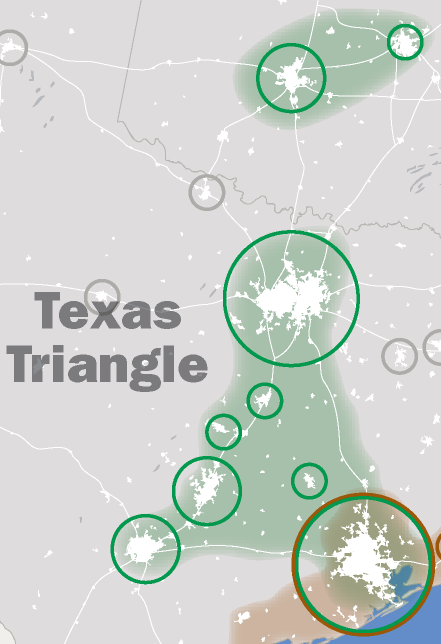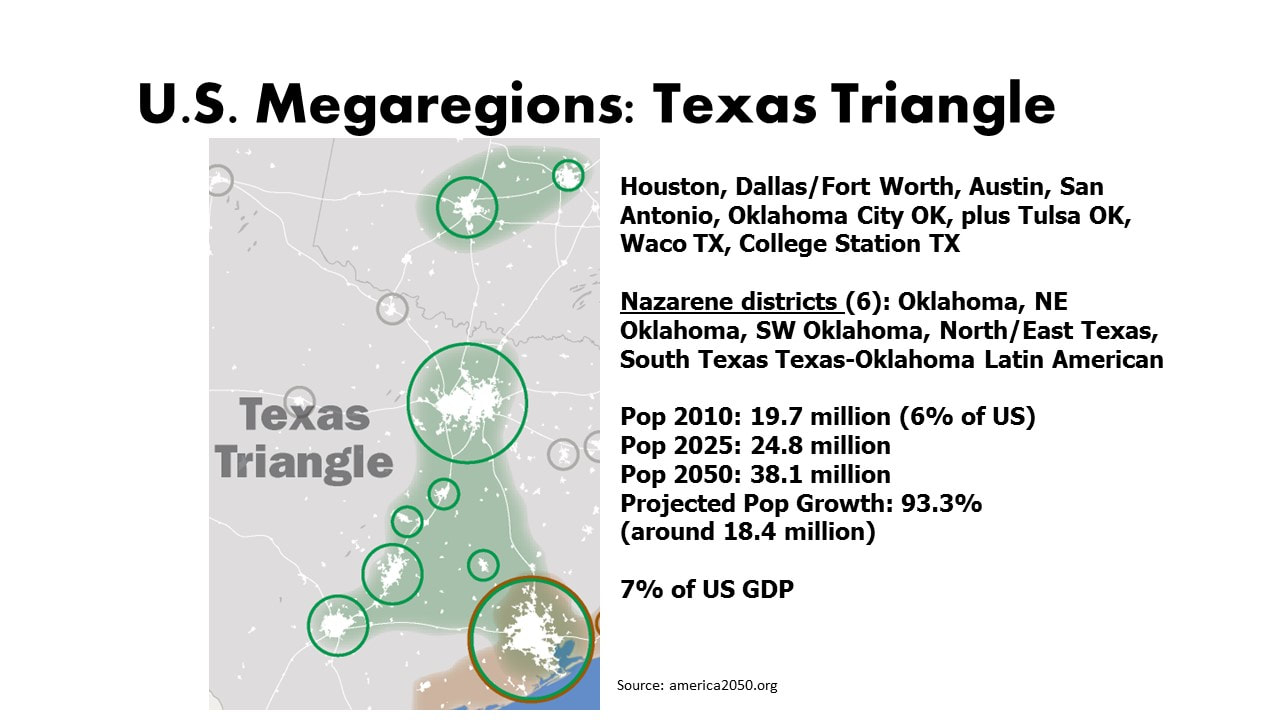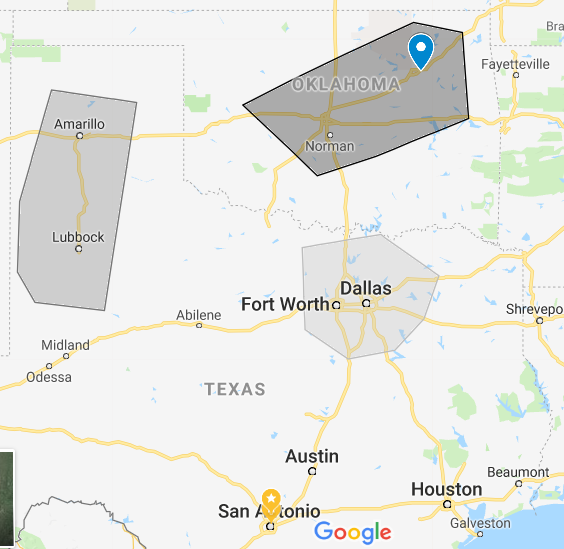|
According to CityMajors.com, due to demographic shifts southward in the continental United States, four of the top sixteen largest cities in the United States are found in the Texas Triangle megaregion: Houston (4), San Antonio (7), Dallas (9), Austin (11), and Fort Worth (16). The Church of the Nazarene recognizes Pilot Point, Texas, around 50 miles north of Dallas, as its birthplace, where there was a unifying of nationwide efforts among several holiness groups into a formalized movement in October 1908. The long history among Nazarenes also makes it very difficult to trace the location of the Church of the Nazarene in the present-day megaregion. Nazarenes track local church data and generates missional strategy through the administrative unit of a "district," roughly equivalent to a synod or diocese. Not being from Oklahoma, I have absolutely no idea why or how Oklahoma or even churches within the environs of Oklahoma City can be miles apart but on one of three districts (or is it four? I've lost track, honestly). The confusing array of administrative units becomes clear when viewing this geographic area through the perspective of a megaregion, which simply represents where people live and how far they are willing to commute for work: It's a "pocket of people," as Neil Cole would say. But, because I'm Nazarene, we'll take a peek at our crazy way of doing it. But, we're not the only ones, apparently America2050 includes Houston in two different megaregions, so how we look at the data will need to be clarified. Let's not forget the important fact above: |
Bio
teacher, writer, Archives
August 2022
Categories
All
|







 RSS Feed
RSS Feed